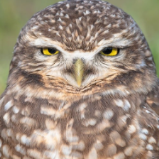How different and rich is the WILDLIFE in Thailand (compared to Europe’s) ?
-
Recently Browsing 0 members
- No registered users viewing this page.
-
Topics
-
Popular Contributors
-
Latest posts...
-
59
Report Beware of Tourist Scams: Bangkok Named Top Hotspot for Fraud
No. In Pattaya the police clamp down on any tourist scams to prevent the city getting a bad name. They are very hard on Thais ripping off tourists. So it doesn't happen that much given the massive quantity of tourists passing through. There is the opposite in fact with locals handing in found valuables. -
32
Vietnam's new extendable 10-year Visa - will the expat exodus begin?
Especially in the last 5 years, prices in Thailand have risen considerably. I didn't visit Thailand from Jan 2020 to Aug2022, I was stuck in Vietnam during pandemic. I couldn't believe the prices in Thailand post Covid. Fruit and vegetable prices in particular. -
50
Transport Bangkok Cabbies Call for Grab Service Ban at Suvarnabhumi Airport
I use Grab from Bangkok to the airport as they come right to my condo. On return I mostly use meter taxis from the airport rank. Occasionally, I use the City Line and BTS to get home from BKK but never Grab. I've not had any issues with taxi ripoffs from the airport, my only complaint would be that some of the meter taxis are very old and a bit dirty with poor A/C. YouTuber - Global Travel Mate did a video on Taxis and Grab from the airport recently. Can be a long wait with Grab, which is why I take meter taxi from the rank. After a 12 hour flight, cost is not an issue. I just want to get home. -
134
Trump ambushes South African president at White House meeting
Plaasmoorde: The Killing Fields (2018) Katie Hopkins' documentary about South Africa -
2
Trump's "Big Beautiful Bill" Passes The House.
Another welfare tax for the rich off the backs of the poor,or less services from your taxes cause those poor billionaires need your help…..wonder how much this will add to the debt….last time around he added 23% …..- 1
-

-
17
Gold, the undisputed "safe harbor". Or is it?
Silver? Or BItcoins? Or Tulips? During 1633 and 1637 there was the Tulip mania in Holland. With a Tulip seed one could buy a house. It had the intrinsic value of a Tulip Seed at least. Bitcoins intrinsic value consist of the air that's in my cars tires. First choice is Silver, second choice is Tulips for me . Bitcoin a distant 77.
-
-
Popular in The Pub
-



.thumb.jpg.3ee24d9400fb02605ea21bc13b1bf901.jpg)




.thumb.jpeg.d2d19a66404642fd9ff62d6262fd153e.jpeg)


Recommended Posts
Create an account or sign in to comment
You need to be a member in order to leave a comment
Create an account
Sign up for a new account in our community. It's easy!
Register a new accountSign in
Already have an account? Sign in here.
Sign In Now